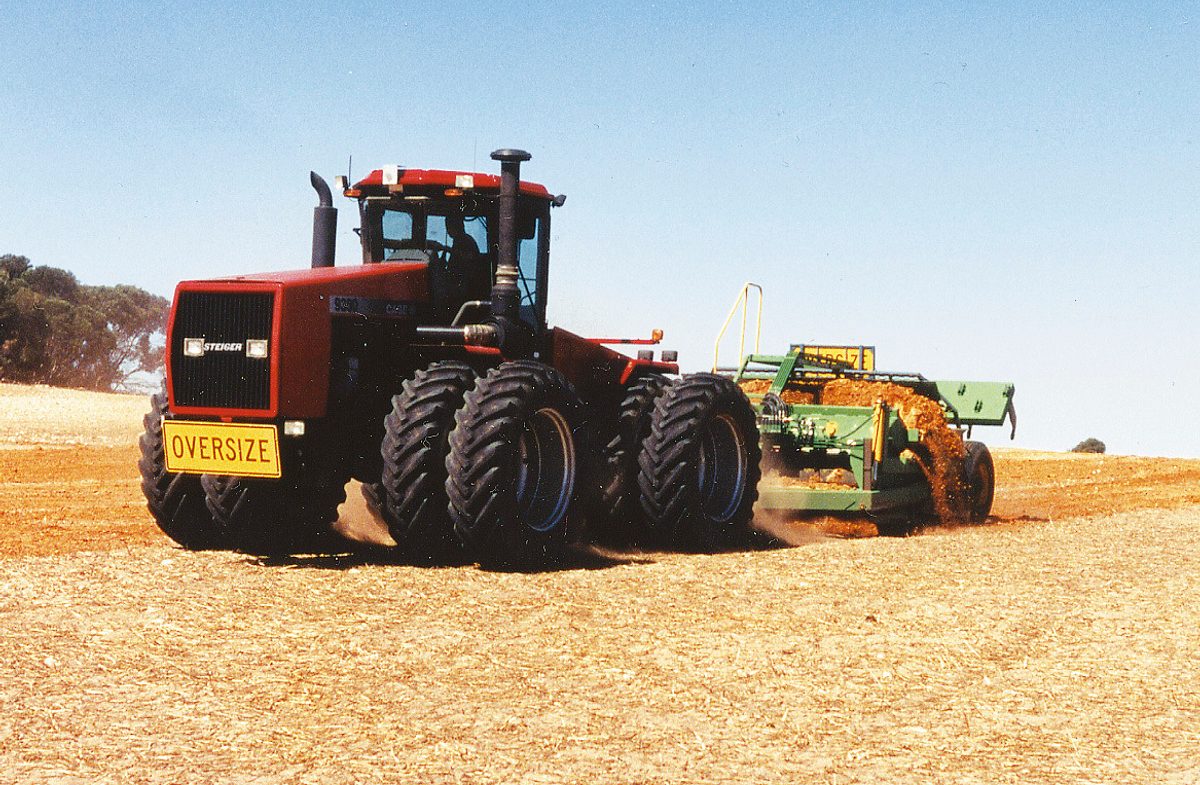Soil modification
South Australia has considerable soil diversity. Its long geological and climatic history has produced a vast range of soils with diverse properties. Around 4.1 million hectares of agricultural land in SA has some form of inherent or existing soil limitation that likely affects productive capacity. These include sandy soils (including water repellent sandy soils), and heavier soils with poorly structured subsoils.
There is potential to improve the condition and productive capacity of some of these soils by soil modification, through application of new advances in technology, machinery and soil management.
Sandy Soils
The greatest opportunity in the agricultural zone of SA is addition and incorporation of clay to sandy or water repellent soils. Sandy textured soils have inherently low chemical fertility and limited water holding capacity, which limits productive potential. They are also highly prone to wind erosion. Many sandy soils are also water repellent, due to natural waxes that make soil particles hydrophobic. Water repellence causes uneven wetting of the soil, resulting in reduced soil water uptake by plants that leads to poor or patchy plant germination, decreased growth and yield and therefore poor water use efficiency. These problems are more severe in dry seasons.
There are approximately 2.4 million hectares (24%) of ‘sand’ textured soils in the agricultural zone of SA that could be modified by addition of clay. Increasing the clay content of sandy soils has potential benefits including:
- Overcoming soil water repellence
- Sequestration of atmospheric carbon
- Less nutrient leaching and offsite pollution
- Increased soil chemical fertility
- Increased waterholding capacity
- Increased resistance to erosion
- Decreased deep drainage which contributes to rising watertables and salinization
- Increased productive potential
This is done by one or more of the following methods:
- Clay spreading (subsoil clay usually excavated from broad pits then spread onto the soil and incorporated into the topsoil)
- Delving (deep ripping with specialised tynes that lift clay from the subsoil into the surface soil layer) then incorporation by tillage or spading
- Spading (deep rotary cultivation that mixes sub-surface clay through the topsoil)
- Other innovative methods eg Plozza plough

Poorly structured subsoils
There are approximately 1.2 million hectares (12%) of agricultural soils with moderate or higher subsoil structural limitations. Poorly structured subsoils are those affected by compaction and/or impaired drainage that can limit soil productive potential. This is often associated with sodic clays. These physical constraints can generally be treated or overcome by deep ripping, in combination with deep placement of gypsum and/or organic material such as compost, manures or biochar.
Find out more:
- Predicted areas with the greatest potential for productivity gains from soil modification.
- Assessing Agricultural Land
- Subsoil amelioration - update on current research – GRDC
- The potential to increase the crop productivity by treating hostile subsoils - GRDC
- Improving crop productivity on sands - what is the latest? – GRDC


